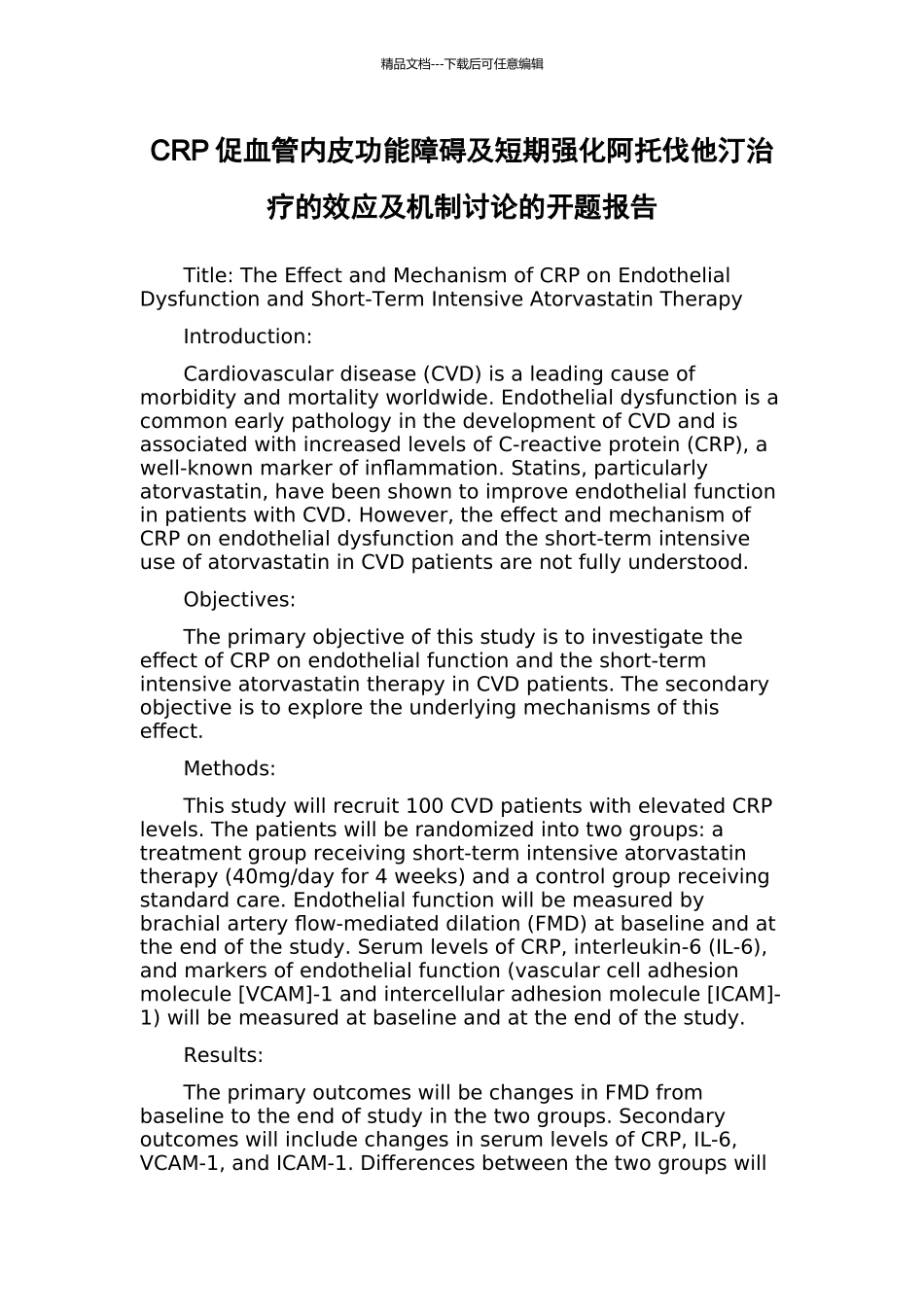精品文档---下载后可任意编辑CRP 促血管内皮功能障碍及短期强化阿托伐他汀治疗的效应及机制讨论的开题报告Title: The Effect and Mechanism of CRP on Endothelial Dysfunction and Short-Term Intensive Atorvastatin TherapyIntroduction:Cardiovascular disease (CVD) is a leading cause of morbidity and mortality worldwide. Endothelial dysfunction is a common early pathology in the development of CVD and is associated with increased levels of C-reactive protein (CRP), a well-known marker of inflammation. Statins, particularly atorvastatin, have been shown to improve endothelial function in patients with CVD. However, the effect and mechanism of CRP on endothelial dysfunction and the short-term intensive use of atorvastatin in CVD patients are not fully understood.Objectives:The primary objective of this study is to investigate the effect of CRP on endothelial function and the short-term intensive atorvastatin therapy in CVD patients. The secondary objective is to explore the underlying mechanisms of this effect.Methods:This study will recruit 100 CVD patients with elevated CRP levels. The patients will be randomized into two groups: a treatment group receiving short-term intensive atorvastatin therapy (40mg/day for 4 weeks) and a control group receiving standard care. Endothelial function will be measured by brachial artery flow-mediated dilation (FMD) at baseline and at the end of the study. Serum levels of CRP, interleukin-6 (IL-6), and markers of endothelial function (vascular cell adhesion molecule [VCAM]-1 and intercellular adhesion molecule [ICAM]-1) will be measured at baseline and at the end of the study.Results:The primary outcomes will be changes in FMD from baseline to the end of study in the two groups. Secondary outcomes will include changes in serum levels of CRP, IL-6, VCAM-1, and ICAM-1. Differences between the two groups will 精品文档---下载后可任意编辑be analyzed by independent t-tests or chi-square tests, as appropriate.Conclusion:This study will provide insights into the effect and mechanism of CRP on endothelial dysfunction and the short-term intensive atorvastatin therapy in CVD patients. The findings may help to guide clinical practice and inform further research on the prevention and treatment of CVD.

